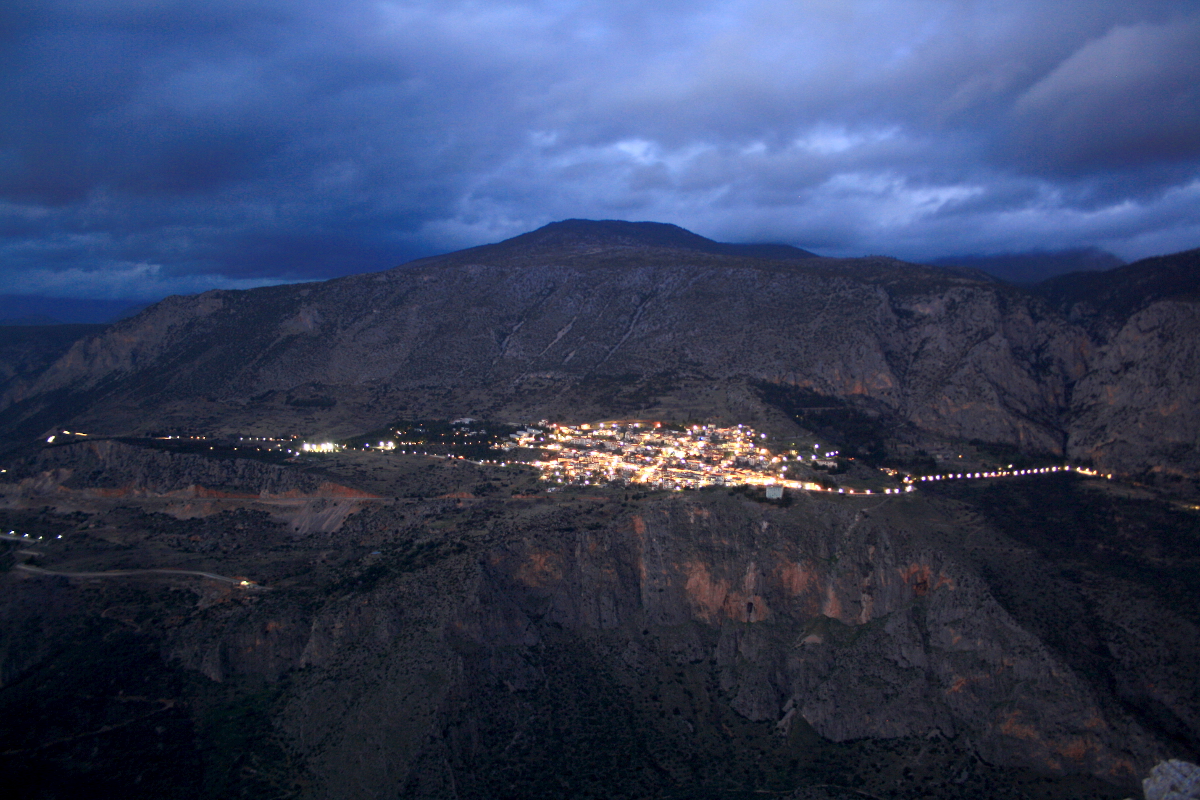Delphi a brief history
In ancient Greek history and mythology, Delphi was referred to as the geographical center of the world, its navel. According to the ancient Greek myth, Zeus set two eagles free to find the center of the world. They soared through the skies westward and eastward and their paths crossed in Delphi.
The first evidence of habitation in the area surrounding Delphi dates back to the Mycenaean era (C14th-C11th B.C.). At the time, the main deity worshipped was Earth. From the 11th to 9th century B.C., the worship of Apollo was established in Delphi.
According to the myth, Apollo took up residence there after he slew the dragon-like Python, which guarded the Earth goddess’s oracle. After his sublimation, Apollo returned to Delphi and established his worship at the oracle which exists in his honor to this day.
Apollo, the god of purification and divination, established the initial forms of his faith at Delphi. He taught people the importance of «measure» and became the most moral and peaceful expression of the Greek spirit and culture. At the renowned Oracle of Delphi, the Gods’ will was dictated through the Priestess Pythia.
During the 8th and 7th centuries B.C., the areas of the sacred precinct of Delphi were configured. Toward the end of the 7th century B.C., the first two stone temples were built, dedicated to Apollo and Athina. At the beginning of the 6th century B.C., Delphi joined the Amphictyony, a union of city-states with common political goals, which served to protect the temple from conquest.
In time, the Delphic Amphictyony attained jurisdiction over the temple of Apollo and in 528 B.C. once again organized the Pythian Games, which took place every four years in honor of Apollo, to commemorate the god’s victory against Python.
Through the Amphictyonic Council, Delphi communicated the ideals of friendship, brotherhood and peaceful coexistence of all people. These ideals have remained central to what is today referred to as the Delphic Ideal.
From the 6th to the 4th century B.C., the sanctuary at Delphi thrived. The temple was decorated with offerings and dedications to Apollo from Greek cities and individuals. Pilgrims would arrive from all over the ancient world to ask for consultation and prophecy for important issues of state and for personal matters. The pilgrims would wash themselves clean at the Kastalia Spring, pay a kind of tax (the pelanon) and sacrifice an animal at the altar of Apollo.
This article is republished courtesly from the theDelphiGuide.com your guide for Delphi, the “Navel of the Earth”.



